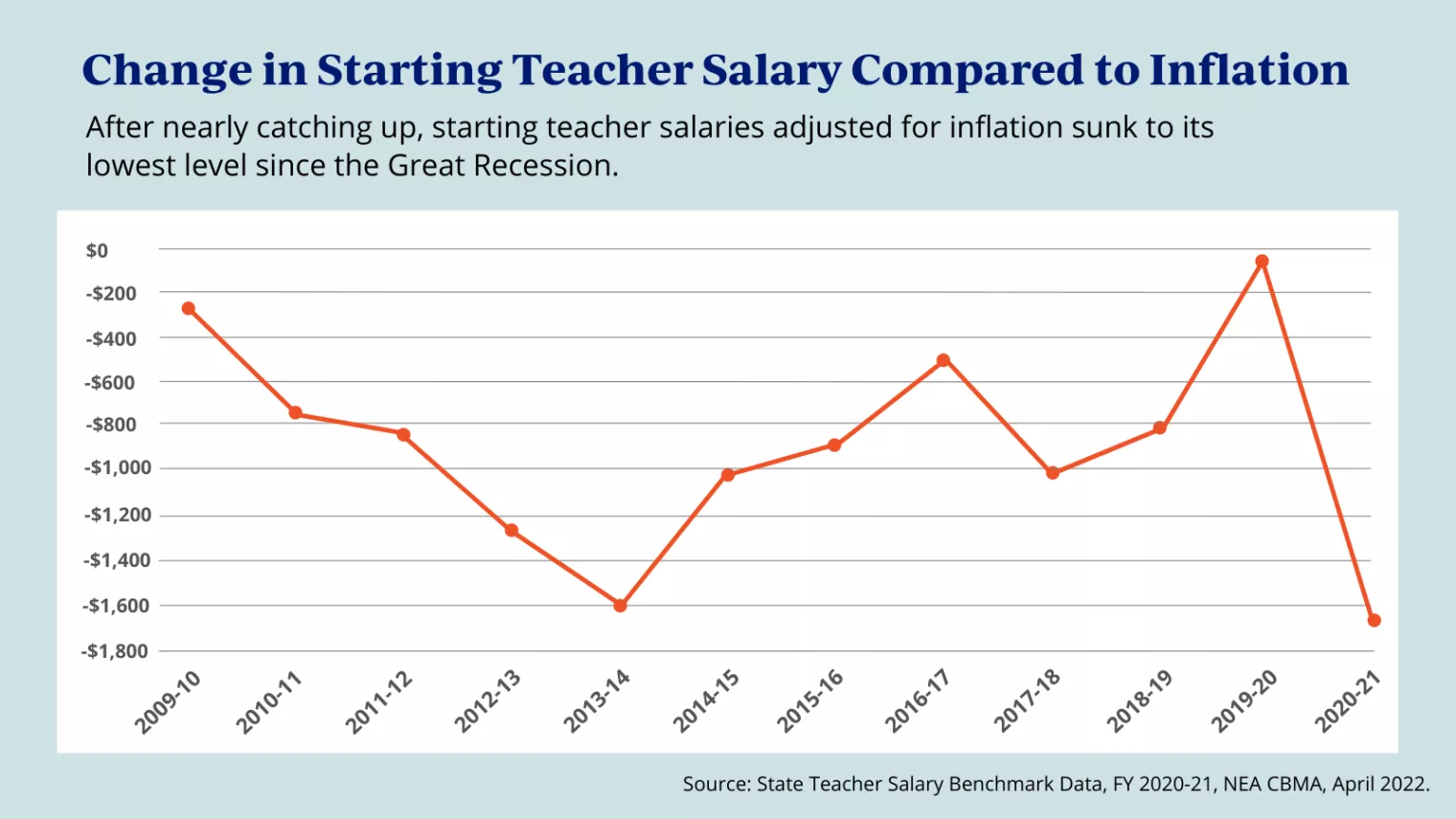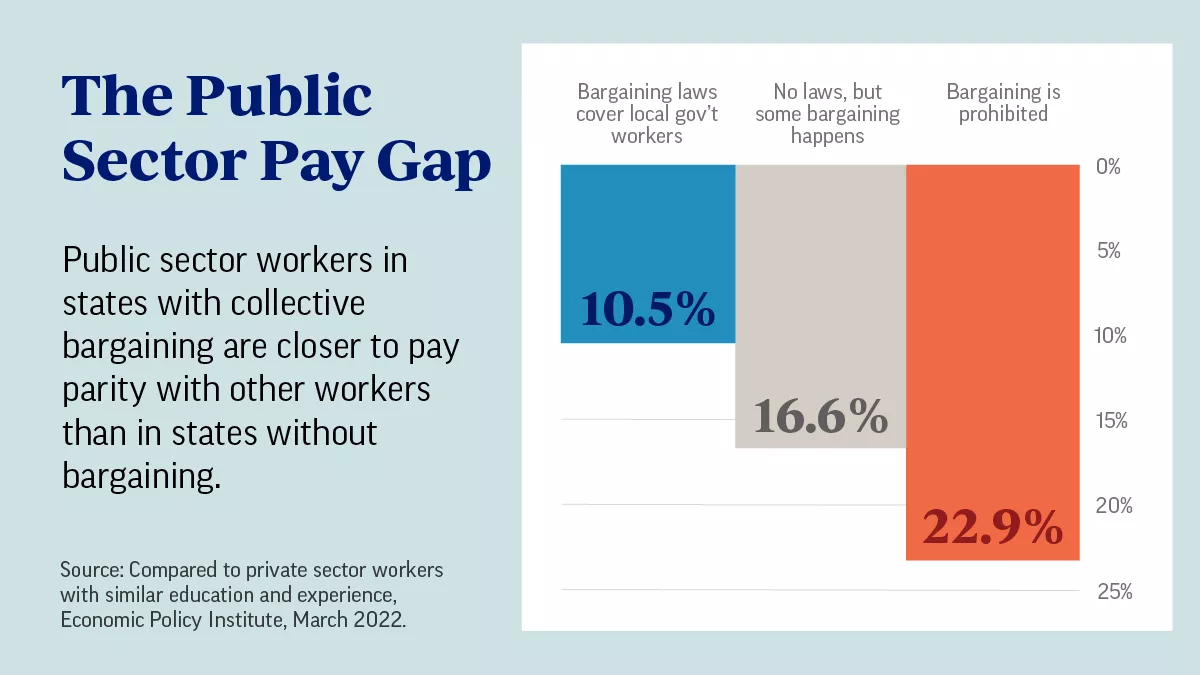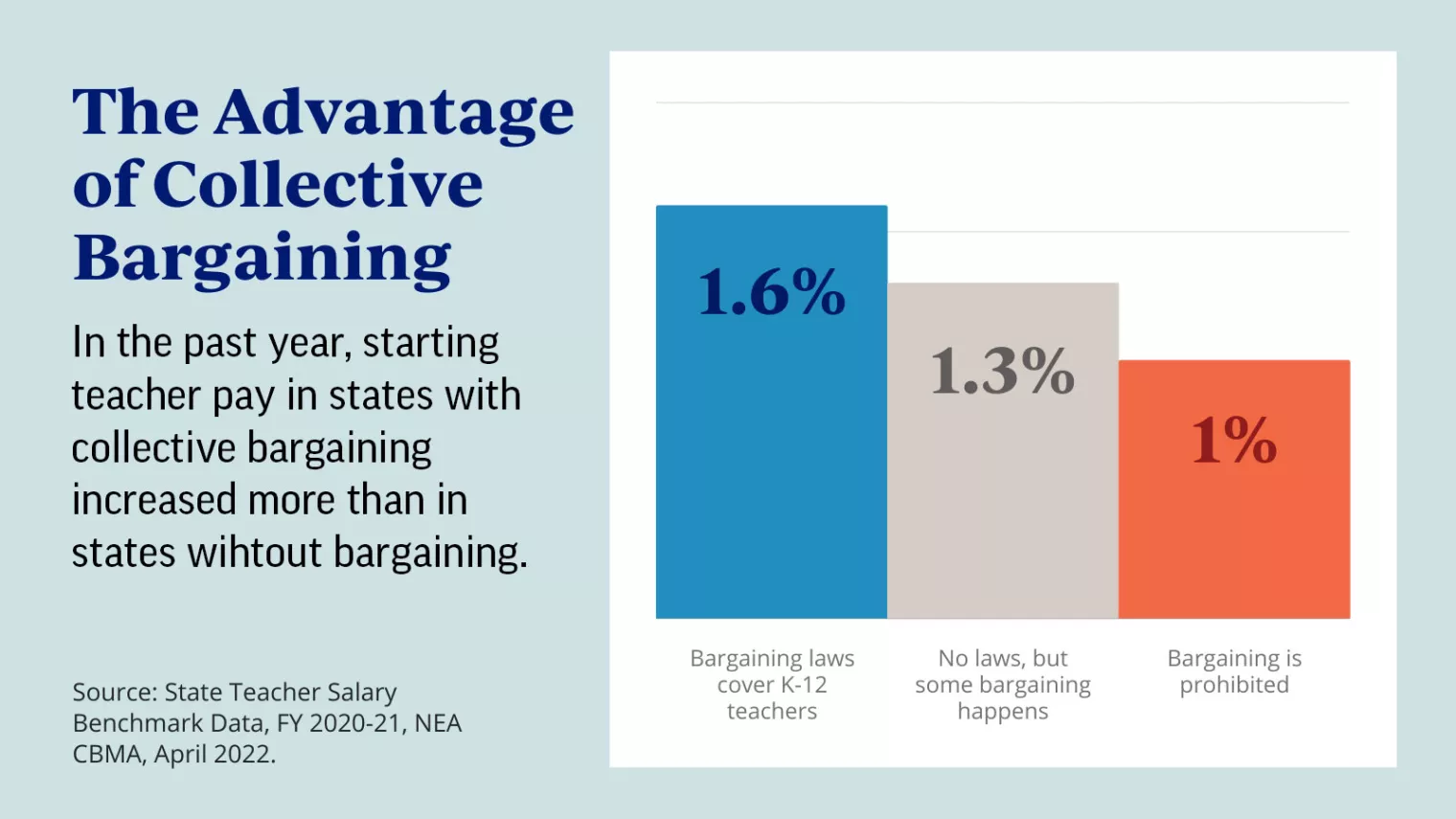Analysis
Changes in starting salaries are representative of what is happening with teacher salaries across the board, and this decrease in inflation-adjusted pay could not have come at a worse time. Though multiple factors are driving what has been a years’-long teacher shortage, insufficient pay is certainly one of the primary reasons that fewer people are entering the profession, and more are leaving. In fact, from a recent survey of its members, NEA concludes public education now finds itself in the throes of “dire staff shortages that have plagued school systems across the country.” And, the current crisis is on the verge of reaching catastrophic proportions as a staggering 55 percent of educators are thinking about leaving the profession earlier than they had planned.
The Economic Policy Institute’s most recent analysis of the erosion of teacher pay finds a 19.2% wage penalty for teachers when compared to other college educated workers with similar characteristics. Applying this pay gap to starting teacher salaries, means that to make them competitive on a national basis with the salaries of other college graduates, starting pay for teachers needs to increase by $10,000; a level paid by just over 10 percent of school districts.
While starting salaries remain abysmally low, experienced educators find themselves short-changed as well. Texas offers one of the most dramatic examples of grossly deficient pay for experienced teachers. Texas ranks 14th in the nation in starting teacher salary but falls to 28th in average teacher salary. The disparity between starting pay and average salaries in the Lone Star State is due to salary structures that inadequately compensate teachers based on additional training and experience.
Among Texas school districts that award additional compensation to teachers who obtain a master’s degree, the average difference in 2020-2021 in salary between new teachers with a master’s degree and no prior experience and those with a bachelor’s degree and no prior experience is only 2.6%. Across the rest of the US, a master’s degree provides new teachers with additional compensation averaging 9.5%. Additionally, the average top salary, excluding differentiated pay for performance or for filling “critical needs,” for teachers in Texas is 43% higher than the average starting salary. Excluding Texas school districts, the average difference between top salary and starting salary in the US is 85%.
Another example is Florida, where the governor and legislature passed a plan to increase the starting salary for teachers to $47,500 over a few years. Among Florida school districts, starting pay for teachers with a bachelor’s degree rose by an average of 13.6% in 2020-2021. However, it is a frequent practice among Florida school districts to not incrementally advance teacher salaries for years at a time. As a result, pay at the top of the bachelor’s degree lane rose by an average of only 1.8%. And since Florida does not tie salary supplements for advanced degrees to increases in base pay, the salaries of experienced teachers holding master’s degrees and doctorates grew by even less. In short, the new Florida law did little to help experienced teachers and will leave them behind for years to come.
The data compiled for this report confirm the well-documented benefits of collective bargaining in public education. New research by EPI finds that unions and collective bargaining can reduce the public-sector pay gap and this report shows that when it comes to salary, teachers fare best in states with collective bargaining laws that withstood the attacks on educator bargaining rights over the past decade.
In states with a collective bargaining law, teacher starting salaries rose by an average of 1.6% in 2020-2021. Conversely, in states where bargaining is permissive, the average increase in starting salary was 1.3%. The increase in starting pay falls to only 1.0% in states that prohibit collective bargaining altogether.
Moreover, in states with a comprehensive collective bargaining law where the scope of bargaining was not reduced over the past decade, the average increase in starting pay was 1.9%, dropping slightly to 1.8% if Florida, which saw many districts increase their starting salary to the $47,500 goal set under the 2020 legislation, is excluded from the calculation. Excluding Texas, which passed its much-ballyhooed legislation to increase teacher pay beginning with the 2019-2020 school year, the average increase in prohibited bargaining states was 0.7%.




